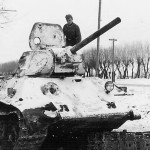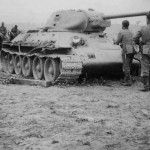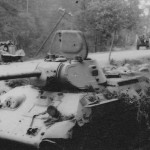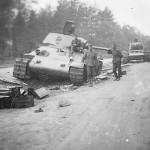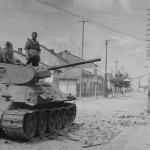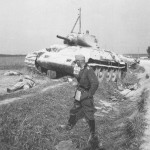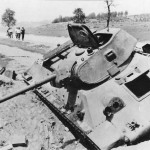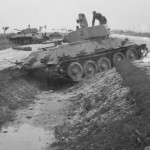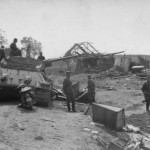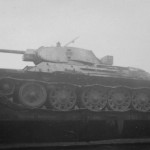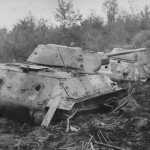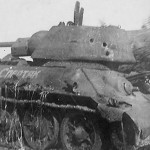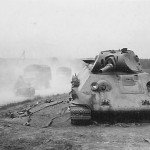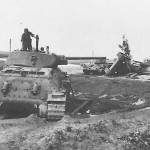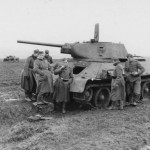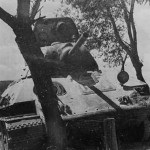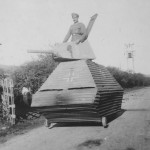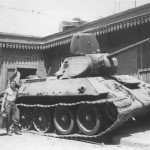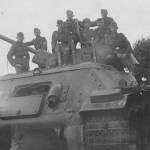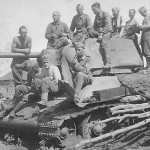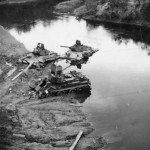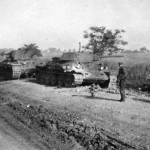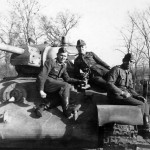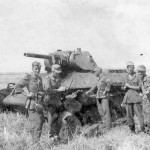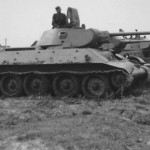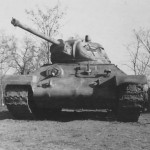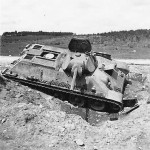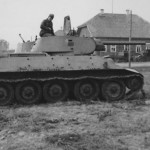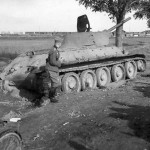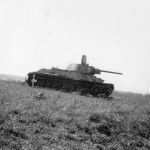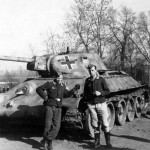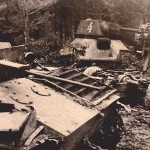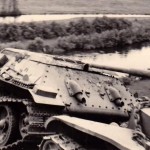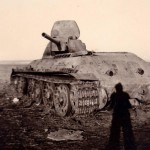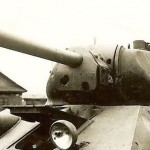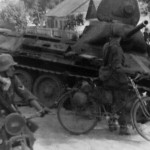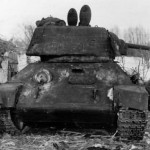destroyed soviet T-34/76 mod 1940 tank
knocked out soviet tank T-34 model 1941 2
destroyed soviet T-34/76 mod 1941 tank winter
knocked out soviet tanks T-34/76
knocked out soviet tank T-34/76 model 1940 1941
Soviet T-34 tank in German service winter camouflage
abandoned soviet tank T-34
T-34/76 and wehrmacht soldiers winter
knocked out soviet tanks T-34 model 1940
abandoned soviet tank T-34/76 mod 1941 2
Knocked out soviet tank T-34 mod 1940. This tank was destroyed at the beginning of the Russian campaign.
Soviet T-34 tank in German Service 2
knocked out soviet tank T-34
abandoned soviet tank T-34/76 mod 1941
T-34 and KV-1 Finland
Soviet T-34 tank in German Service winter camo
T-34/76 tank 1942
destroyed soviet T-34/76 tank
T-34 tanks in German Service Lujew February 1943
burning soviet tank T-34
abandoned by the Red Army T-34 and KV-1 tanks
T-34 76 Operation Barbarossa July 1941
T-34/76 as a German road sign
Soviet T-34 tank in German Service
T-34 76 model 1941 Wolchow eastern front
T-34 tank in German Service Lujew February 1943, winter camo
burned out soviet tank T-34/76
T-34/76 tank in mud
burned out soviet tank T-34/76 mod 1940
This T-34/76 was abandoned by its crew without any visible damage during Operation Barbarossa.
Knocked Out soviet T-34 tank rear
abandoned soviet tank T-34/76
German T-34/76 tank with Hexagonal Turret winter camo
burned out soviet tank T-34/76 2
abandoned soviet tank T-34/76 mod 1941 5
destroyed soviet T-34/76 mod 1941 tank
T-34/76 tank Operation Barbarossa
destroyed soviet T-34 tank
T-34 76 knocked out on the roadside during the fighting in Ukraine in June-July 1941
T-34/76 of the 5th SS Panzer Division Wiking
Soviet T-34/76 tank in German Service
T-34 and KV-1 tanks Meschew eastern front 1941
Early T-34/76 model 1940 – Operation Barbarossa
A german soldier stands on the top of a captured T-34 tank
T-34/76 Hexagonal Turret
wehrmacht soldiers next to T-34 mod 1941
T-34/76 front view
Soviet Troops atop T-34 Tanks During Fighting in Crimea
abandoned soviet tanks T-34/76 mod 1941
burned out soviet tank T-34
abandoned soviet tank T-34/76 mod 1941 4
T-34 tank panzeratrappe
abandoned soviet tank T-34 76 mod 1940
Soviet T-34 tanks in German Service
Early T-34/76 and wehrmacht soldiers
German T-34 76 on railroad car
T-34/76 tanks in mud
abandoned soviet tank T-34 76 coded 10 25
T-34 tank in German Service 1942 Staraja Russa
knocked out soviet tank T-34 model 1940
abandoned soviet tank T-34/76 winter
T-34/76 and wehrmacht troops
T-34/76 tank with Hexagonal Turret named Spartak
destroyed soviet T-34/76 model 1940 armed with the 76 mm gun L-11
knocked out soviet tanks T-34/76 model 1941
abandoned soviet tank T-34/76 mod 1941 3
Soviet T-34 model 1941 tank after capture by German forces
T-34 76 model 1940 tank 16
Wehrmacht soldier and Panzerattrappe T-34
T-34 tank 26
Soviet T-34 tank model 1940 armed with the 76 mm gun L-11
Soviet T-34 tank 7
T-34 model 1941 Belarus Luninetz 2
Soviet T-34 tank 2
T-34 Belarus Luninetz
T-34 tank after capture by German forces, Summer 1941
Soviet medium tank T-34 model 1942 with cast hexagonal turret
T-34 named Frunze, number 26
Soviet medium tank T-34
Soviet medium tank T-34 model 1940
Soviet medium tank T-34
Soviet medium tank T-34 stuck in the swamp
T-34 tank Baranowo August 1942
Captured T-34 tank
T-34 tanks and BT-7
T-34 and KV-1 tanks, Operation Barbarossa 1941
T-34 tank named Frunze, number 26
Captured german tank T-34 (beute panzer)
T-34-76 tank, eastern front Orel 1941
Burned out Soviet medium tank T-34
Soviet medium tank T-34 18
Soviet medium tank T-34
T-34 medum tank
Panzerkampfwagen T-34 747 (r) 3
T-34 tank with welded turret
T-34 tank
Soviet medium tank T-34 upside down
Soviet medium tank T-34 armed with the 76 mm gun F-34
Wehrmacht soldiers next to a T-34 tank
Burned out T-34 tank mod 1943 armed with the 76 mm gun F-34
T-34 tank after capture by German forces
Destroyed T-34 tank manufactured at STZ
Frontal view of the abandoned T-34 tank, Eastern Front 1942
T-34/76 tank in german Wehrmacht service, code 531
T-34 and BT-7 tanks
German T-34, beute panzer
German T-34/76 tank – Panzerkampfwagen T-34 747(r)
T-34 tank model 1941 7
Captured T-34 tank
T-34 tank after capture by German forces
T-34 tank armed with the 76 mm gun F-34
T-34 model 1943 with cast hexagonal turret and Tiger, winter
Abandoned T-34 model 1940 and BT-7 tanks, 1941 Operation Barbarossa
German T-34 tank model 1941 “531” – Panzerkampfwagen T-34 747(r)
Knocked-out T-34 tank model 1940 on the roadside
T-34/76, tank with welded turret
T-34 tank model 1941 2
T-34 tank model 1941
T-34 tanks captured intact
German Panzerkampfwagen T-34 747 (r) 2
Panzerkampfwagen T-34 747 (r)
T-34/76 tank early model 1941, manufactured at plant 183
german T-34 tank armed with the 76 mm gun F-34
German T-34 panzer 747 (r), winter camo
T-34/76 model 1942, russian tank, coded white 4
T-34 tank hull
Early T-34 tank
T-34 76 manufactured at STZ
destroyed T-34 tank 4
T-34/76 tank model 1941 with welded turret manufactured at STZ
T-34/76 tank
T-34 tank manufactured at plant 183
T-34 tank “Mickey Mouse” in german service
T-34/76 model 1941, tank manufactured at STZ
T-34 76 model 1942 – tank zavod 183
T-34/76 tank model 1941 with STZ turret
T-34/76 tank model 1940
T-34 mod 1942 tank, hexagonal turret, plant 183 1942
Burning T-34/76 tank early, plant 183 Kharkov
T-34 was a Soviet medium tank. German Designation: Panzerkampfwagon T-34 747(r).
T-34 – a legendary tank – was one of weapons thanks to which the World War II was won. T-34 came into being as an answer for imperfections of BT-7 tank and its forerunners. The first result of modernization of BT tanks were constructions marked as A-20 and A-30 built in 1938 as improvements of BT-IS, but later aborted for the benefit of a more heavily armed and better armoured tank marked A-32. In A-32 most features of future T-34 could be recognized. It had well formed body with a leaning armour and molded tower with leaning walls where cannon of 76,2 mm which gave bullets a large initial velocity was placed. The tank was equipped with a suitably strengthened suspension of Christie type, transferred from BT series. However, possibility of taking tracks off and moving the tank only on wheels was given up. Although A-32 tank was a very good construction, an engineer Mikhail Koshkin won approval of Stalin for creating a better armoured second prototype of A-32 and in that way T-34 came into being. It was introduced to production in 1940.
When German attacked the Soviet Union in 1941 the occurrence of T-34 on the battlefields was an unpleasant surprise for Wehrmacht. Suitably leaning and thick armour of T-34 (as for standards of 1941) was proof against most of then German anti-tank weapons and 76,2 mm gun was an effective weapon in the battle with most German tanks. Germans quickly reached for an antidote in the form of e.g. FlaK 88 gun which massacred chaotically counterattacking Soviet tanks.
When in the middle of 1942 Germen introduced Panzer IV Ausf F2 tanks to service there was the end of fighting T-34 off. One year later T-34 was declasses by German tanks of a new generation.
However, despite awareness of imperfection of the construction of T-34, the tank was still produced in a great number. As the future has shown a decision was right because the production of German tanks was limited to relatively small number of effective but sophisticated in construction vehicles (partially due to changing the production into a self-propelled guns production) which put German troops in a disadvantageous position. Simply, Wehrmacht were not able to fight against such a bulk of tanks, and at the same time they were slowly bleeding to death. On the other hand, Soviets made up losses easily resulting from the imperfectness of low-level construction of tank crews’ training or incompetence of Soviet commanders.
Since 1941 many versions and variants of the T-34 tank were designed , many of which were different only in outside details. Production requirements caused that many simplifications were introduced and finishing most of T-34 was severe to the limits of possibilities. Despite evacuation of many factories in 1941 number of tanks leaving the improvised production line was still increasing. Simplified technologies which shortened the production time were used, e.g. body welding was automated. Over time the 76,2 mm gun was replaced with the gun of 85 mm caliber (D-5T or ZiS-S-53), placed in a new turret. That variant was marked as T-34/85. On the chassis of T-34 self-propelled guns were also worked out. They were armed in a cannon of 85,100 or 122 mm caliber, a version with a flame-thrower, a tractor. Also engineer and mine roller (PT-34) version were produced.


